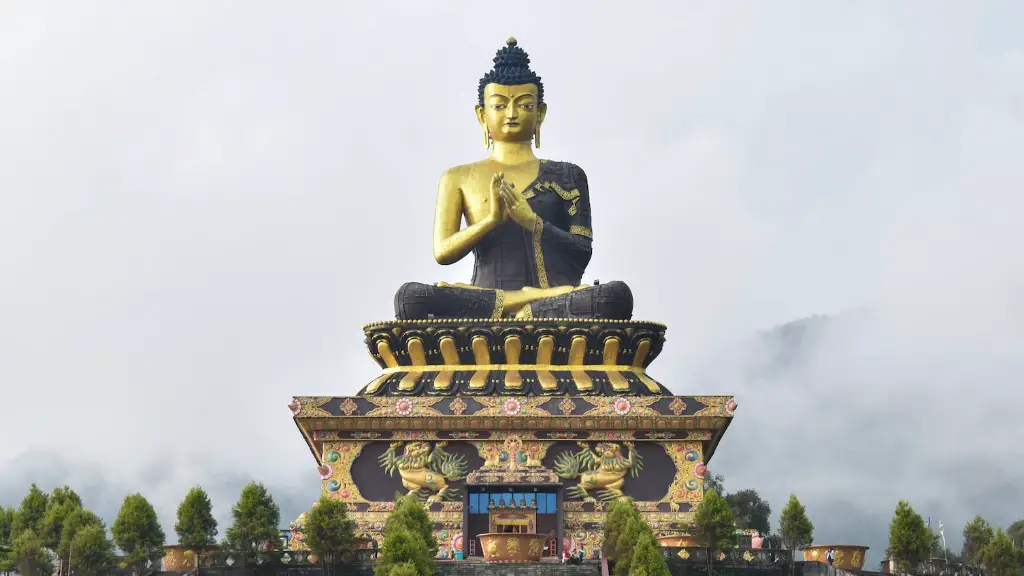The Texts of Hinduism
Hinduism is an ancient religion that has been practiced for at least 3000 years. It is the oldest of the major world religions, and its sacred texts have been passed down for thousands of years. The sacred texts of Hinduism are what scholars refer to as the ‘Vedic’ or ‘Vedantic’ tradition. These texts form the basis of Hindu philosophical and religious thought.
The Vedic texts were transmitted orally by sages and priests, who taught them to their students. This oral transmission was then written down, and these texts are now known as the ‘Vedas’. The Vedas are divided into four main parts: the Rigveda, Yajurveda, Sama Veda, and Atharva Veda. They form an extensive compendium of sacred Hindu texts, and are considered to be divinely inspired.
The Vedic texts are the primary source of Hinduism’s beliefs and rituals. They include stories and myths about the gods and goddesses, instructions for performing religious ceremonies, and philosophical discussions about the nature of reality. They contain hymns and prayers to the gods and goddesses, as well as instructions for various types of yoga practices.
The Vedas are not the only sacred texts of Hinduism. There are also many other texts known as the Upanishads, which were written at different times over the centuries. These texts are mainly philosophical in nature, and are concerned with understanding the nature of reality and how one should live in accordance with it.
The Bhagavad Gita
Perhaps the best-known and most widely read of all Hindu sacred texts is the Bhagavad Gita. This text is found in the Mahabharata, one of the two great Hindu epics. It is essentially a dialogue between Krishna, an incarnation of the god Vishnu, and Arjuna, an early prince.
The goal of the Bhagavad Gita is to provide spiritual guidance on the path of enlightenment. It is largely concerned with the idea of dharma, which is a kind of spiritual truth or natural law. Dharma encompasses both religious and social obligations, and the Gita explains how individuals can achieve liberation from these obligations by performing their duties to reach spiritual perfection. It is also a text that deals with the idea of karma, which is the spiritual law of cause and effect.
In the Bhagavad Gita, Krishna emphasizes the importance of karma yoga, or the practice of performing one’s duties in a meditative state, as the key to liberation. He also explains the need to cultivate loving devotion (bhakti) of the divine in order to attain liberation. This combination of the practice of yoga and loving devotion to the divine is known as ‘bhakti yoga’. The Gita is an important text for Hindus because it provides a spiritual guide for navigating the complexities of life.
The Dharma Sutras
The Dharma Sutras are also a key part of Hindu sacred texts. The Dharma Sutras are texts that consist of laws on a range of topics, including rituals, marriage, food, and animal sacrifice. These texts were written between 500 BC and 200 AD, and were intended to be used as guides by priests in order to perform the correct rites. They emphasise the importance of the performance of Dharma (duty), as well as social obligations and codes of conduct.
The Dharma Sutras are not just about laws, however. They also include philosophical discussions about the nature of reality. They emphasize the importance of understanding the interconnectedness of all things, as well as the need to live in harmony with nature. They also discuss the concept of karma, or the idea that one’s actions have an effect on their future lives.
The Upanishads
The Upanishads are another important set of Hindu sacred texts. These texts were written between 800-200 BC, and they focus on understanding the nature of the self, consciousness, and the connection between humans and the divine. The Upanishads are philosophical in nature, and are largely concerned with understanding the relationship between the physical and the spiritual realms.
The Upanishads contain passages on the nature of reality, truth, and the ultimate truth. They discuss the concepts of karma, reincarnation, and liberation from suffering. They also discuss spiritual practices such as meditation and prayer, and they emphasize the need to cultivate a state of detachment and renunciation of worldly desires in order to attain liberation.
The Puranas
The Puranas are another set of Hindu sacred texts. They are mainly focused on stories, myths, and legends about the gods and goddesses, and are intended to provide information about Hindu tradition and culture. The Puranas also contain information about cosmology and the creation of the universe, as well as descriptions of the different realms of Hinduism.
The stories in the Puranas are often used to illustrate spiritual truths, and to discuss the nature of the divine and the path to enlightenment. They can provide valuable insights into Hindu thought and provide guidance on how to live in accordance with dharma.
The Manusmriti
The Manusmriti is another important Hindu sacred text. It is a collection of laws, written by the sage Manu, and it is divided into twelve books. The Manusmriti is an extremely influential and important text in Hinduism, as it outlines the social, religious, and legal codes of conduct. The Manusmriti is important because it is seen as a guide to living in accordance with Dharma, which is the path to spiritual liberation.
The Manusmriti stresses the importance of Hindu caste system, and it outlines the particular duties of individuals in each caste. It also discusses the importance of following the path of Dharma in order to achieve liberation.
The Mahabharata
The Mahabharata is an important Hindu epic text, written over two thousand years ago. It is an immense and complex text, and is considered to be one of the longest poems in the world. It is essentially an extended narrative about a great war between two branches of the same family, and it contains both philosophical teachings as well as stories about gods and goddesses.
The Mahabharata is an important source of Hindu allegorical and spiritual teachings, and it contains some of the most popular stories from Hindu mythology. It is also important because it contains one of the most influential sections of Hindu sacred text: the Bhagavad Gita.
The Ramayana
The Ramayana is another important Hindu sacred text, and it is the shorter of the two great Hindu epics. The story follows the trials and tribulations of Rama, an incarnation of the god Vishnu, as he attempts to rescue his wife, Sita, from the demon king Ravana. The Ramayana is a text that is filled with allegory, and it serves to illustrate many of the spiritual truths that are central to Hinduism.
The Ramayana is an important source of Hindu mythology and spiritual teachings, and it is seen as a parable for the human condition. It emphasizes the importance of courage, virtue, and loyalty, and is an important source of information about Hindu beliefs and culture.
Conclusion
Hinduism is an ancient religion that has been around for thousands of years. Its sacred texts have been passed down for many centuries, and they form an important part of Hindu thought. The four main Vedas are the primary source of Hinduism’s beliefs and rituals, while the Bhagavad Gita, Dharma Sutras, Upanishads, Puranas, Manusmriti, Mahabharata, and Ramayana are also key texts in Hinduism. Each of these texts plays an important role in understanding the spiritual and philosophical teachings of Hinduism.

